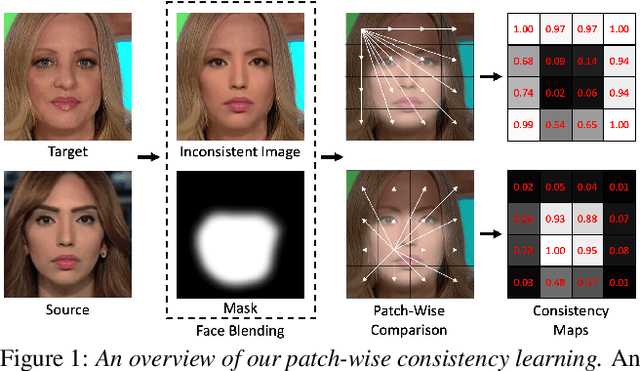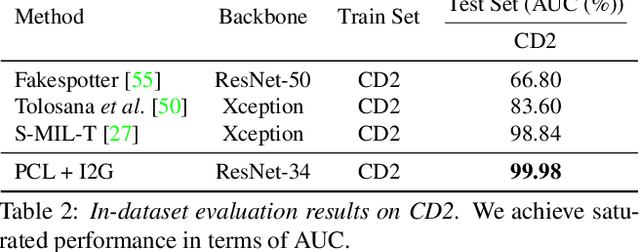Learning to Recognize Patch-Wise Consistency for Deepfake Detection
Paper and Code
Dec 16, 2020



We propose to detect Deepfake generated by face manipulation based on one of their fundamental features: images are blended by patches from multiple sources, carrying distinct and persistent source features. In particular, we propose a novel representation learning approach for this task, called patch-wise consistency learning (PCL). It learns by measuring the consistency of image source features, resulting to representation with good interpretability and robustness to multiple forgery methods. We develop an inconsistency image generator (I2G) to generate training data for PCL and boost its robustness. We evaluate our approach on seven popular Deepfake detection datasets. Our model achieves superior detection accuracy and generalizes well to unseen generation methods. On average, our model outperforms the state-of-the-art in terms of AUC by 2% and 8% in the in- and cross-dataset evaluation, respectively.
 Add to Chrome
Add to Chrome Add to Firefox
Add to Firefox Add to Edge
Add to Edge